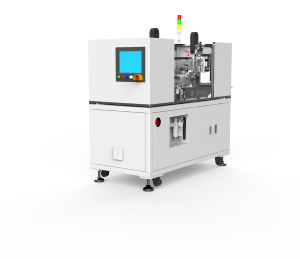Laminating machine manufacturers watch the principle of automatic laminating machine?
Release date:2022.06.23
Laminating machine manufacturers watch the principle of automatic laminating machine?
In recent years, the market of laminating machines has become more and more broad, and laminating machines have so many advantages, so you need to pay attention to the purchase. When choosing a laminating machine, it is not simple to just look at the price, you must believe that every penny is worth every penny. When comparing the price, you should also compare the configuration. For example, what brand of cylinder, sensor, motor, PLC, and film measuring eye are used. These are all essential configurations of the equipment. Deshang Automation specializes in the research and development and production of automatic film laminating machine equipment in the electronics/communication industry. As long as you tell me your needs, it is guaranteed that the quality and speed of lamination are better than that of manual lamination. The key is to save production costs. The amount of one piece of equipment is manual lamination. 3 to 5 times, the cost can be recovered in 2-3 months.
The working principle of the laminating machine
The self-adhesive parts on the belt are pulled by the driving device to the stripping plate under the suction device. Under the guidance of self-adhesion, they are peeled off by a series of tensioning guide devices, and after being corrected by the automatic manipulator, they are automatically Mounted on a workpiece positioned with a jig.
Common faults and troubleshooting of laminating machine
2. Inaccurate temperature measurement: thermocouple, temperature controller. Incorrect installation and damage.
3. The working vacuum cannot come up: the air path is blocked, the hand valve or solenoid valve is not closed, the vacuum pump motor belt is loose, and the vacuum gauge is damaged.
4. The main power switch is tripped: the input wire on the top of the heating box is leaking, the distribution box is leaking, the outside wire is on the equipment, the motor is leaking, etc.
5. The suction film is not in place: the vacuum degree is not enough, the air leaks, the temperature is not enough, the film is too thin, the workpiece is pasted with other materials, the concave depth of the workpiece exceeds the pull-up of the film, the suction-covering time is too short, the film is not pulled up, the distance between the workpiece too close.
6. The surface of the covered workpiece is folded and not smooth or the corners cannot be wrapped: the film is not straightened, the film quality is not good, the workpiece is not polished well, the glue is sprayed too much, and the touch panel under the workpiece is too low.
Seven, the phenomenon of play breaking: the temperature is too high, the heating time is too long, the film quality is not good, and there is no heating.
Eight, there is a bad situation of sticking to the table
1. Improper selection of adhesive, improper setting of glue amount, and wrong proportioning measurement. The type and amount of adhesive should be re-selected.
2. The diluent contains alcohol and water that consume NCO group, so that the hydroxyl group of the main agent does not react. High purity ethyl acetate should be used.
3. There is powder spray on the surface of the printed matter. Gently wipe off with a dry cloth.
4. The ink layer of the printed matter is too thick. The adhesive coating arrangement should be increased to increase the pressure
5. The ink layer of the printed matter is not dry or completely dry. It should be hot-pressed again before gluing; choose adhesive with high solid content; increase the thickness of adhesive coating; increase the temperature of drying tunnel, etc.
6. The adhesive is absorbed by printing ink and paper, so that the coating amount is insufficient. The application amount should be reformulated and set.
7. The surface treatment of the plastic film is not enough or exceeds the expiry date, making the treated surface invalid. The plastic film should be replaced.
8. Low pressure, fast speed and low temperature. The film temperature and pressure should be increased, and the vehicle speed should be appropriately reduced.
Nine, the phenomenon of bubbling
1. The printing ink layer is not dry. It should be hot-pressed again and then glued; delay the lamination time and let it dry completely.
2. The printing ink layer is too thick. The amount of adhesive coating should be increased, and the pressure and compounding temperature should be increased.
3. The drying temperature is too high, and the surface of the adhesive is crusted. The drying temperature should be lowered 4. The surface temperature of the composite roller is too high. The compound roll temperature should be lowered.
5. The film is wrinkled or slack, and the film is uneven or curled. The film should be replaced and the tension adjusted.
6. There are dust impurities on the surface of the film. It should be removed in time.
7. The adhesive coating is uneven and the dosage is small. The coating amount and uniformity should be improved.
8. The adhesive concentration is too high, the viscosity is high, and the coating is uneven. Use thinner to reduce adhesive concentration.
10. The film is wrinkled
1. The film transfer roller is unbalanced. The transfer stick should be adjusted.
2. The two ends of the film are inconsistent or wavy. The qualified film should be replaced.
3. The adhesive layer is too thick, and the solvent is not evaporated completely, which affects the viscosity. It is squeezed by the pressure roller and slips between the paper and the film. The amount of glue applied should be adjusted and the temperature of the drying tunnel should be increased.
4. The two ends of the electric heating roller and the rubber roller are unbalanced, the pressure is inconsistent, and the line speed is not equal. Both rollers should be adjusted






